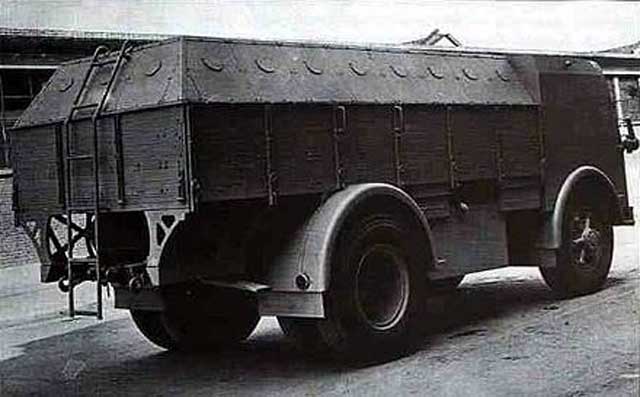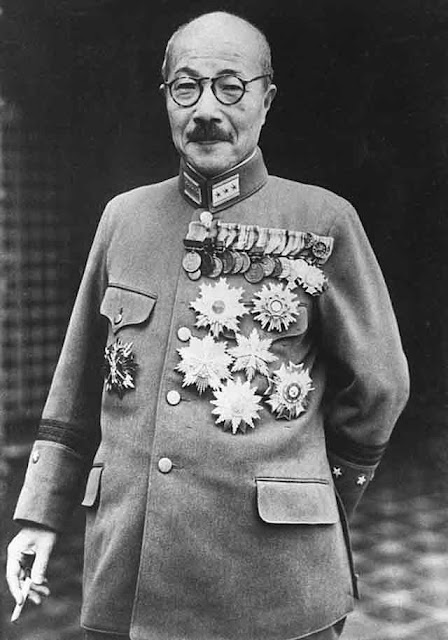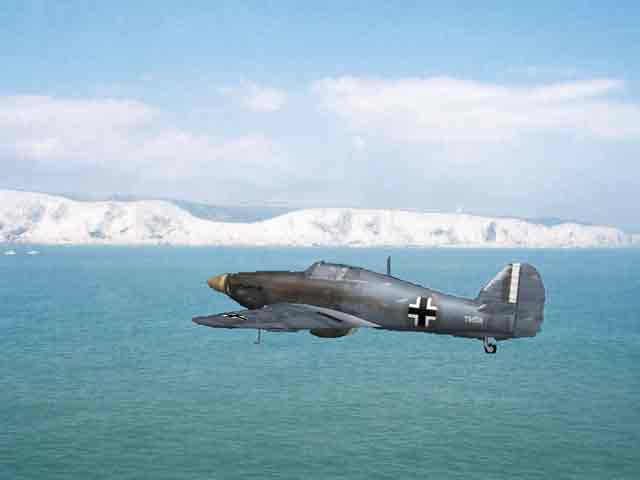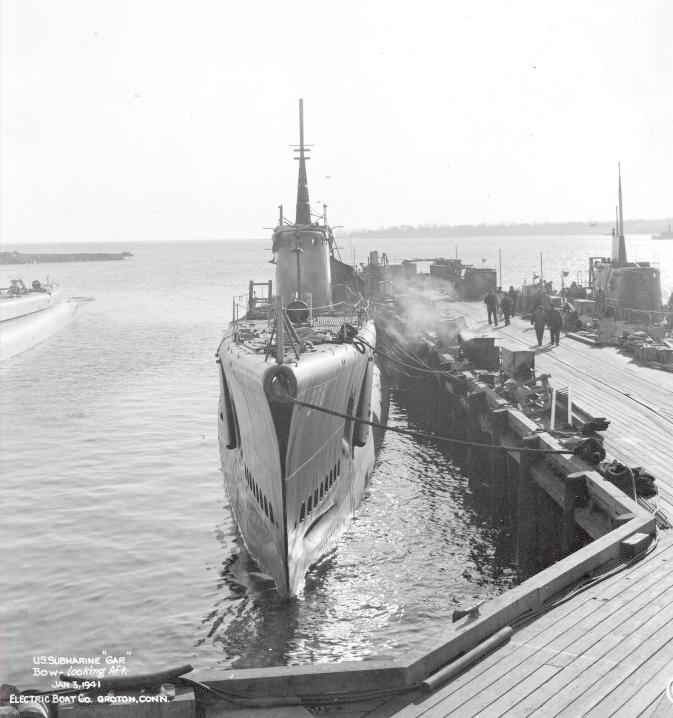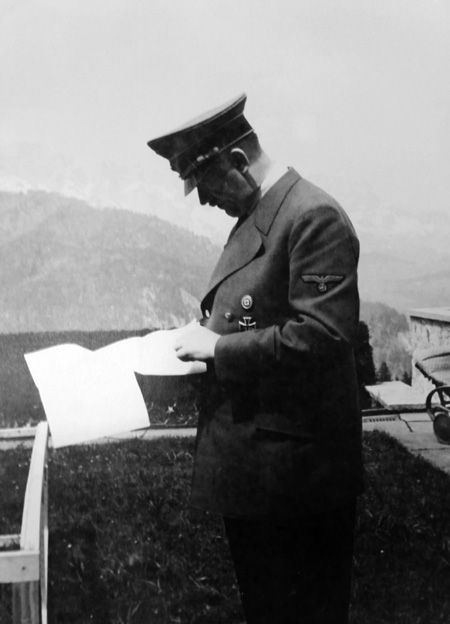Battle of the Pacific: While the Allies declared Manila an open city in late December 1941, they have retained control of the capital city and all of its facilities and supplies. Until now, that is. On 2 January 1942, the Japanese actually enter the city and it ceases being "open." A battalion of the Japanese 1st Formosa Regiment and two of the 47th Infantry Regiment are the first units into the city. Other Japanese troops occupy the Cavite Naval Base, which the departing US troops and the Japanese Air Force's bombs have wrecked.
The Allies have been quite successful in moving 80,000 troops and 26,000 civilian refugees into the Bataan Peninsula, but everyone is tired, supplies are short, there is little prepared infrastructure such as airfields and naval bases, and the troops already are on half rations. Perhaps as a gesture of defiance, the US Army headquarters in Bataan sends a message:
The fate of the Philippines is rising to the top of American concerns on 2 January 1942, and things do not look good. US and Filipino troops under Lieutenant General Douglas MacArthur are racing to secure the neck of the Bataan Peninsula before the Japanese can get there, and so far that is going reasonably well. However, the US Naval and US Army Air Force presence in the Philippines is dwindling fast, which gives the Japanese invaders a huge advantage. This is an unusual situation for World War II, where the Axis has aerial domination over the western Allies, and the imbalance cannot be rectified right away. In Australia, Major General George H. Brett, Commanding General-Designate of the U.S. Forces in Australia (USFIA), sends a dispiriting message to General George C. Marshall, Chief of Staff, U.S. Army in Washington, D.C. Brett indicates that reinforcing the Philippines is becoming critical, but it is impossible for the time being. Until a major airbase can be completed in Darwin, Australia, and a similar supply and repair depot constructed at Townsville, Queensland, effective relief is impossible. Of course, Brett also doesn't have much naval power to spare, either. The Philippines are beginning to look like a lost cause, but nobody wants to abandon them just yet.
In the Malay Peninsula, Indian III Corps is under increasing pressure along the Perak River, as Japanese troops cross the river and take Teluk Anson (Teluk Intan) near the west coast. The 1st Independent Company and Indian 3d Cavalry Squadron retreat from the area, while Indian 12th Brigade Group nearby barely hangs on to its position. The Japanese also attempt an ad hoc landing at Kuala Selangor late in the day, but Allied artillery prevents this. After dark, the troops in the area begin to withdraw to the Slim River. The silver lining for the Allies is that from this point onward, the Malay Peninsula narrows like a triangle reaching its apex until the peninsula reaches Singapore at the southern tip. This should favor the defense, and the Battle of Kampar which ends today is characterized as an Allied defensive victory due to the delays imposed on the Japanese. However, the inability of the Commonwealth troops to hold any defensive line for any length of time so far is a bad omen. The less ground that remains between the Japanese lines and Singapore makes Japanese air attacks easier, more effective, more often, and less costly. Eventually, the British could run out of the real estate to defend, though great hope is placed in "Fortress Singapore."
In Thailand, the American Volunteer Group (AVG, or "Flying Tigers") have been battling Japanese raiders over Rangoon since 20 December 1941 as the Allies squabble below them. Today, they launch their first raid on Japanese forces, a strike on an airbase in Thailand. This makes the title of a US Army Air Forces video, "Flying Tigers Bite Back," real. The AVG squadron leader is John Van Kuren Newkirk of Westchester, New York. Identified publicly only as "Scarsdale Jack," Newkirk is a former Navy pilot. Flying with him in their separate P-40B Tomahawk aircraft is Gregory "Pappy" Boyington, a former US Marine Corps aviator who was such a good flyer that he served as an instructor at Pensacola. Both Newkirk and Boyington are "private contractors" who are employed by the Central Aircraft Manufacturing Company (CAMCO), a front for covert US operations in Burma led by Claire "Old Leatherface" Chennault.
On Malta, a Bomb Disposal Officer reports finding a unique bomb with tail fins made of a blue alloy. There are other odd aspects to this weapon and how it is found. The officer reports it as a "seemingly rocket-propelled" type of bomb. If so, it is the first use of such a weapon. The trail grows cold here and it is unclear how this turns out.
In the Crimea, the opposing Soviet and German forces begin to dig in just west of the port of Feodosia. Soviet 44th Army's offensive from its bridgehead at Feodosia has stalled after German 42 Corps finally sorted out its units and got them into position facing the Red Army thrust. The Soviet success in recapturing the Kerch Peninsula has not come cheap, as they have lost 41,935 men, including 32,453 killed or captured and 9482 wounded or suffering from frostbite and other maladies. They also have not succeeded in their ultimate objective of relieving Sevastopol, which was never a realistic goal due to the large German 11th Army forces surrounding the port. However, the Red Army has taken a great deal of pressure off of Sevastopol and caused General Erich von Manstein a huge problem in maintaining two separate fronts, one facing west toward Sevastopol and the other facing east against the Soviet forces which landed at Feodosia. The Red Army does have other units of the 51st Army heading west from Kerch, but they are moving slowly and the Germans also are building their line with units taken from the siege of Sevastopol.
US Military: US Army Air Force Eighth Air Force is activated on 2 January 1942 at Savannah Air Base, Georgia.
German Homefront: Heinrich Himmler writes to Reinhard Heydrich asking him to suppress the Swing Kids (Swingjugend). The Swing movement of Hamburg, Himmler complains, is detrimental to the war effort. Himmler suggests that some time in concentration camps might improve the Swing Kids' attitudes.
1942
January 1942
January 1, 1942: Declaration By United Nations
January 2, 1941: Manila Falls to Japan
January 3, 1942: ABDA Command Announced
January 4, 1942: MacArthur on His Own in the Philippines
January 5, 1942: Soviets Plan General Offensive
January 6, 1942: US Army in Europe
January 7, 1942: Soviet General Offensive Opens
January 8, 1942: Hitler Sacks Hoepner
January 9, 1942: Battle of Dražgoše
January 10, 1942: Building the Jeep
January 11, 1942: Japan Takes Kuala Lumpur
January 12, 1941: Rommel Plans Counterattack
January 13, 1942: First Ejection Seat Use
January 14, 1942: Operation Drumbeat First Sinking
January 15, 1942: U-Boat Off NYC
January 16, 1942: Carole Lombard Crash
January 17, 1942: British Take Halfaya Pass
January 18, 1942: Soviet Paratroopers in Action
January 19, 1942: FDR Approves Atomic Bomb
January 20, 1942: The Wannsee Conference
January 21, 1942: Parit Sulong Bridge Battle
January 22, 1942: Parit Sulong Massacre
January 23, 1942: Japan Takes Rabaul
January 24, 1942: Battle of Makassar Strait
January 25, 1942: Kholm Surrounded
January 26, 1942: GIs Land in Europe
January 27, 1942: Battle of Endau
January 28, 1942: Rommel Takes Benghazi
January 29, 1942: First US Coast Guard Ship Sunk
January 30, 1942: Singapore Isolated
January 31, 1942: Army Group South Averts Disaster
2020
 |
| Japanese troops celebrate their capture of Manila, the Philippines, on 2 January 1942. |
Manila, Cavite lost; MacArthur fights on, holding Corregidor.However, wars are not won by losing cities and holding tiny islands.
 |
| An Italian POW, still wearing his Afrika Korps cap, arrives in London on 2 January 1942 (AP Photo). |
 |
| USS President Hayes (AP-39), shortly after launching at Norfolk Navy Yard, Portsmouth, Virginia, on 2 January 1942 (Photo No. 19-N-26565. Source: U.S. National Archives, RG-19-LCM). |
 |
| The Seattle Star on 2 January 1942 reports on "Alien Restrictions Tightened" as restrictions on foreign nationals from Axis countries increase. |
On Malta, a Bomb Disposal Officer reports finding a unique bomb with tail fins made of a blue alloy. There are other odd aspects to this weapon and how it is found. The officer reports it as a "seemingly rocket-propelled" type of bomb. If so, it is the first use of such a weapon. The trail grows cold here and it is unclear how this turns out.
 |
| "Pilots and Hurricanes of No 56 'Punjab' Squadron at Duxford, 2 January 1942. The official caption reads: 'Fighter aircraft donated by the Province of Punjab have been in action and have scored numerous victories over the Hun'." © IWM (CH 4547). |
US Military: US Army Air Force Eighth Air Force is activated on 2 January 1942 at Savannah Air Base, Georgia.
German Homefront: Heinrich Himmler writes to Reinhard Heydrich asking him to suppress the Swing Kids (Swingjugend). The Swing movement of Hamburg, Himmler complains, is detrimental to the war effort. Himmler suggests that some time in concentration camps might improve the Swing Kids' attitudes.
 |
| Image from "Dr. Seuss Went to War" (Mandeville Special Collections Library, UC San Diego). |
1942
January 1942
January 1, 1942: Declaration By United Nations
January 2, 1941: Manila Falls to Japan
January 3, 1942: ABDA Command Announced
January 4, 1942: MacArthur on His Own in the Philippines
January 5, 1942: Soviets Plan General Offensive
January 6, 1942: US Army in Europe
January 7, 1942: Soviet General Offensive Opens
January 8, 1942: Hitler Sacks Hoepner
January 9, 1942: Battle of Dražgoše
January 10, 1942: Building the Jeep
January 11, 1942: Japan Takes Kuala Lumpur
January 12, 1941: Rommel Plans Counterattack
January 13, 1942: First Ejection Seat Use
January 14, 1942: Operation Drumbeat First Sinking
January 15, 1942: U-Boat Off NYC
January 16, 1942: Carole Lombard Crash
January 17, 1942: British Take Halfaya Pass
January 18, 1942: Soviet Paratroopers in Action
January 19, 1942: FDR Approves Atomic Bomb
January 20, 1942: The Wannsee Conference
January 21, 1942: Parit Sulong Bridge Battle
January 22, 1942: Parit Sulong Massacre
January 23, 1942: Japan Takes Rabaul
January 24, 1942: Battle of Makassar Strait
January 25, 1942: Kholm Surrounded
January 26, 1942: GIs Land in Europe
January 27, 1942: Battle of Endau
January 28, 1942: Rommel Takes Benghazi
January 29, 1942: First US Coast Guard Ship Sunk
January 30, 1942: Singapore Isolated
January 31, 1942: Army Group South Averts Disaster
2020


